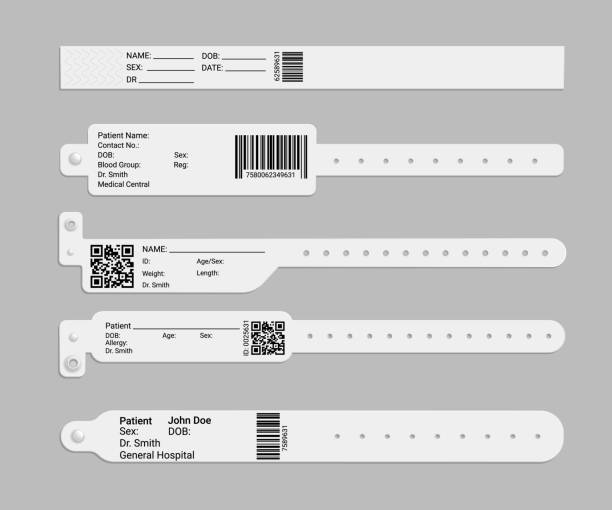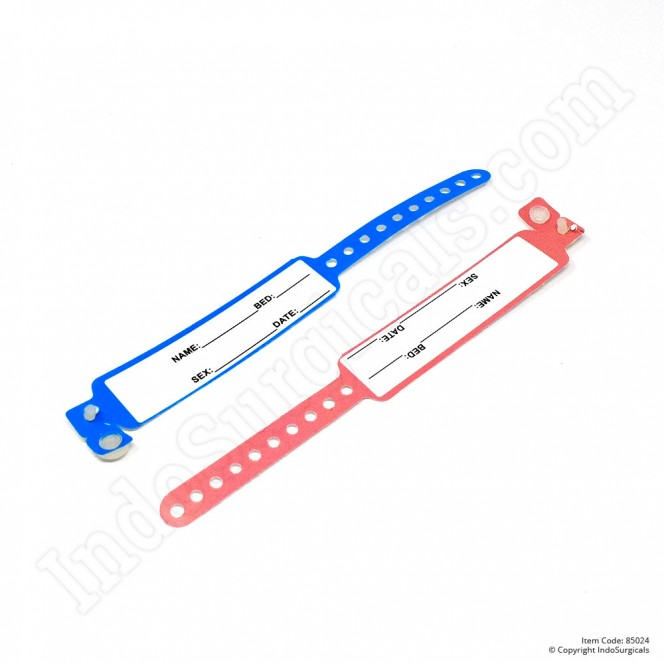Top Features to Look for in a Long-lasting Patient Identification Band
Top Features to Look for in a Long-lasting Patient Identification Band
Blog Article
Exploring the Numerous Sorts Of Patient Identification Band Made Use Of in Clinical Facilities
In the detailed world of healthcare, the important role of Patient Identification bands often goes undetected. These bands, differing from straightforward paper wristbands to innovative RFID bands, develop the backbone of Patient safety protocols, ensuring precision in Patient Identification. The large diversity of these bands, each with its distinct advantages and constraints, is commonly overlooked. As we browse via this subject, one may get understanding into the subtle complexities and important importance of such bands in medical facilities.
Comprehending the Value of Patient Identification Bands
While they might appear like simple accessories, Patient Identification bands play an essential function in medical facilities. These bands serve as a crucial tool for validating Patient identity, avoiding medical mistakes connected to misidentification. Patient Identification bands additionally help in enhancing administrative tasks, ensuring exact record-keeping and payment.
Standard Paper Wristbands: Their Usage and Limitations
Traditional paper wristbands have actually been a staple in Patient Identification throughout various clinical facilities. While their usage prevails, they harbor certain constraints that may impact their performance in Patient monitoring. This section will concentrate on the range of their application and the intrinsic drawbacks linked with their use.
Paper Wristbands: Usage Extent
In the realm of Patient Identification, paper wristbands have long held a crucial duty. These bands are typically used in outpatient setups, where the Patient's remain is short-lived. The wristbands consist of vital details such as the Patient's name, day of birth, and a distinct Identification number. This easy, yet reliable system, allows clinical professionals to promptly and accurately recognize clients, making certain the appropriate therapy is administered. Paper wristbands are additionally used in emergency scenarios, where fast Identification is critical. Their usage reaches occasions like blood contribution drives and mass vaccination programs, additionally highlighting their flexibility. Despite improvements in innovation, the simple paper wristband remains a cost-efficient and reputable solution for Patient Identification in numerous health care circumstances.
Limitations of Paper Wristbands
Regardless of their widespread use, paper wristbands are not without their disadvantages. In addition, paper wristbands frequently do not have the technological capacities of more modern-day alternatives, such as barcoding or RFID chips, limiting their performance to merely displaying composed information. Paper wristbands can create discomfort or skin irritability to some patients, specifically when worn for extended durations.
Barcoded Wristbands: Developments in Patient Identification
While Patient Identification has long been an essential aspect of health care, the arrival of barcoded wristbands symbolizes a considerable leap forward. These bands leverage the simpleness of barcoding innovation, enabling for Patient info to be rapidly checked and accessed. They boost the rate and precision of Patient Identification, reducing the threat of clinical mistakes related to misidentification.
Superhigh Frequency Identification (RFID) Bands: an Action In The Direction Of Futuristic Health Care
The advancement of Patient Identification bands has caused the development of Radio Regularity Identification (RFID) Bands (patient identification band). These ingenious devices existing crucial advantages for health care centers, supplying an extra effective and technologically advanced means of Patient Identification. The application of RFID in medical care is a substantial step towards an extra futuristic strategy to Patient administration and safety
Recognizing RFID Bands

RFID Bands: Key Advantages
Mainly, these bands boost Patient safety and security by giving accurate, rapid Identification, therefore reducing clinical errors. RFID bands can save a vast amount of Patient information, consisting of medical background and allergic reactions, allowing customized treatment. Generally, RFID bands represent a significant advancement in Patient Identification technology, profiting both people and healthcare carriers.
Carrying Out RFID in Medical Care
These bands give a smooth means to track and identify individuals, ensuring their safety and security and you could look here improving efficiency in therapy procedures. RFID bands decrease medical errors by supplying precise Patient Identification, which is critical in protecting against misdiagnosis or wrong medication administration. Thus, the execution of RFID bands is a substantial action towards enhancing Patient security and health care distribution.

Color-Coded Wristbands: Helping in Quick and Accurate Diagnosis
In the bustling setting of a medical center, color-coded wristbands have actually become vital tools for swift and exact Identification of a client's clinical condition. These wristbands, worn by people, bring specific shades that represent different clinical problems or statuses. Red might show allergic reaction dangers, while yellow might symbolize a loss threat. This system is made to offer prompt visual hints to doctor, enhancing Patient security and care quality. In emergency situation scenarios, making use of these wristbands permits fast decision-making. The efficiency of color-coded wristbands depends on the harmony of color interpretation throughout medical care establishments, requiring typical criteria for constant application.
Methods for Efficient Implementation and Monitoring of Patient ID Bands
Accomplishing optimum usage of Patient Identification bands requires a well-structured approach for their execution and management. Patient education and learning is likewise critical; people must understand the purpose of the bands and the need for their continuous wear. It's necessary to have a back-up strategy in area, such as barcode scanning or biometrics, to make certain that Patient Identification is never jeopardized.
Verdict
Patient Identification bands are vital in clinical facilities to ensure safety and security and precision. Traditional paper, barcoded, RFID, and color-coded wristbands each hold distinct advantages, varying from cost-effectiveness to advanced data storage space and immediate medical alerts. Effective execution and monitoring of informative post these bands can substantially decrease medical errors, enhance performance, and enhance total Patient care. Thus, understanding and using these Identification tools is vital for maintaining high criteria in healthcare.
These bands, differing from basic paper wristbands to advanced RFID bands, create the foundation of Patient security procedures, guaranteeing accuracy in Patient Identification.The development of Patient Identification bands has get more actually brought concerning the emergence of Radio Regularity Identification (RFID) Bands. Overall, RFID bands represent a substantial innovation in Patient Identification modern technology, profiting both clients and healthcare providers.
RFID bands minimize clinical mistakes by providing precise Patient Identification, which is important in protecting against misdiagnosis or incorrect medicine management. Patient education and learning is also essential; people need to understand the purpose of the bands and the requirement for their continuous wear.
Report this page